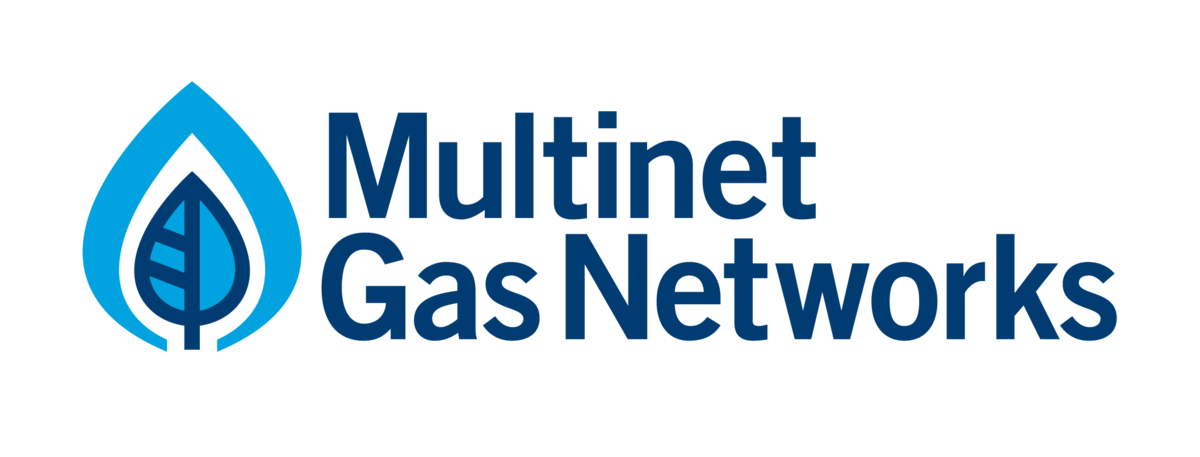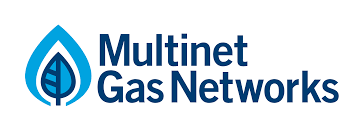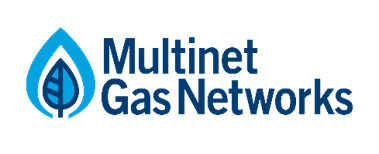Information
-
Audit Title
-
Job Description
-
Location
-
Conducted on
-
Prepared by
-
Contractor/s
-
Work Group (name of crew leader & members)
-
Auditor(s)
-
Additional Representative(s)
Prior to Commencing Work SWP 2.1, SWP 2.5, MG MA E0.001
-
Have you checked for Life Support Customers in today’s work area, and was it safe to proceed with works?
-
Do all personnel have MG passports on site?
-
Is all training, authorisations and qualifications current for the functional role of the passport holder including contractors (e.g. traffic management)?
-
Are all relevant SWMS on site?
-
Has the JSEA/risk assessment identified site specific risks, been signed and dated by all crew members and have SWMS been identified for the task?
-
Are all identified risk control measures on SWMS and JSEA/risk assessment in place?<br>Are required high risk work permits and associated checklists in place?
-
Is PPE in accordance with Multinet Gas as a minimum and Service Providers expectations and within inspection/ replacement dates?
-
Are field employees aware of the emergency plan and is emergency equipment readily available?<br>Extinguisher located up wind and accessible to the worksite (SWP 2.5)?<br>Is the extinguisher with-in test date?
-
Have sources of ignition been eliminated from work area?
Specific HSE Checks SWP 1.4, SWP 1.5, SWP 1.7, SWP 2.4, SWP 2.8, SWP 2.9, SWP 2.10, SWP 2.11, SWP 2.14
-
Does the task require entering and working in a confined space and, if so, are the personnel competent and compliant (SWP 1.5)? <br>(check passports and ‘prior to work checks’ have been completed)<br>o Is rescue equipment on site?<br>o Has an entry permit been used correctly?
-
Are all persons required to work in a gaseous environment trained and competent in the operation and care of respiratory protection?<br>Is the correct respiratory protection being used? <br>(check passports and ‘prior to work checks’ have been completed) <br>Has the following been considered?<br>o Are there adequate personnel on site?<br>o Have ignition sources been addressed<br>o Is there adequate ventilation to disperse contaminants?<br>o Has a standby been appointed?<br>o Is the B.A equipment and fire extinguisher manned?<br>
-
Has a designated rest area been assigned?
-
Is all electrical equipment calibrated and within test and tag dates?
-
Is the gas meter location in accordance with engineering standard ES-DD-4352?
-
If a Jeavons J106 regulator is the service regulator, has it been handled and disposed of appropriately as per SWP 2.14?
Electrical Tests SWP 2.13
-
Has service pipe and gas meter assembly been tested to ensure it is not ‘electrically’ live using an approved voltage tester (SWP 2.13)?
-
If voltage is detected – was area restricted, consumer informed, power isolated, supervisor contacted (SWP 2.13)?<br>Note: Do not carry out any work until fault has been determined.
-
Has the meter been disconnected using cross bonding leads (SWP 2.13)?
-
Have wet rags been used where required to eliminate static?
-
Other comment
Gas Escape Investigation SWP 10.8
-
In the case of a major escape has the appropriate notifications been made?
-
Has a dry chemical fire extinguisher been placed correctly?
-
In the case of a damage or escape has the gas cloud been assessed?
-
In the case of a damage or escape has the wind direction been identified?
-
In the case of a damage or escape has the need for respiratory protection been addressed?
-
Is the First responder trained and competent in the use of gas detector equipment?
-
Has supervisor been advised if high risk scenario? (proceed)
-
Was the response time achieved?<br>If the required response time was not achieved was the responsible supervisor advised?<br>• Priority 1 gas escapes must be dispatched within 10 minutes and the site attended within 1 hour of receipt of the request to attend.<br>• Priority 2 gas escapes must be dispatched within 20 minutes and the site attended within 4 hours of receipt of the request.<br>
Gas Escape Investigation - Clarification of Gas Escapes from Public Reports SWP 10.8
-
Was it a Class 1 or Class 2 leak (refer below)?
-
• Class 1 leaks must be actioned immediately until the risk has been eliminated or reduced to a level where it can be reclassified to a lower class.
-
• Class 2 leaks pose little or no immediate threat at the time of classification but have the potential to deteriorate so should be scheduled for repair within 7 working days or sooner as requested by MGN.
-
If Class 1 leak, which of the following criteria were presented:<br>• A leak reported by the police, a public authority or member of the general public?<br>• A leak found inside or under a building?<br>• A leak in a duct or casing pipe that provides a leak path into a building?<br>• A leak close enough to a building and large enough that gas is likely to enter the building?<br>• A leak that, based on all the pertinent factors, is or could be a danger to the safety of the general public or gas distribution network personnel?<br>• A leak that resulted in a gas ignition?<br>• A leak that can be heard, felt or seen?<br>• A leak on a Transmission or HP2 Main?
Gas Escape Investigation - The 6 entry points SWP 10.8
-
The 6 entry points must be investigated for:
• Publicly reported leaks
• If the gas escape can’t be seen or heard.
Gas Escape Investigation - 1. Checking a Building for Gas SWP 10.8
-
Were readings taken under doors before entering a building or rooms?
-
In an enclosed space, were readings for gas taken at ceiling height as well as floor level (natural gas is lighter than air)?
-
Were all voids and cavities checked for gas readings?
-
If reading of 20% LEL or greater were found in an enclosed area, was an evacuation initiated?
-
If an evacuation was required was the following addressed:<br>- A call for assistance to management?<br>- The building Supervisor located and informed?<br>- A safe exit route and mustering point established?<br>- People advised to leave the building and move to a suitable assembly location?<br>- Ensure people don’t return to the building?
-
If gas levels in enclosed areas were 50% LEL or above, was it ensured there was no electrical switching?
Gas Escape Investigation - 2. Checking the meter set SWP 10.8
-
Was the meter set checked with gas detection equipment and soapy water including regulator, ‘O’ connections and the meter itself?
-
Were indications of gas present recorded on the Work/Service order forms?
-
Was the consumer’s pipework leak tested?
Gas Escape Investigation - 3. Inlet Service SWP 10.8
-
Was the length of the inlet service surveyed (meter to main) with gas detection equipment?
-
Were indications of gas (if present) recorded on the Work/Service order forms?
-
Was the possibility of a previous structure considered and the likelihood of an old existing service that hasn’t been cut off correctly investigated?
Gas Escape Investigation - 4. Inside Boundary (fence line) SWP 10.8
-
Was the boundary of the property surveyed with gas detection equipment?
-
Were indications of gas (if present) recorded on the Work/Service order forms?
Gas Escape Investigation - 5. Footpath or Roadway SWP 10.8
-
Was the footpath and/or roadway surveyed with gas detection equipment where the gas main is located?
-
Were indications of gas (if present) recorded on the Work/Service order forms?
Gas Escape Investigation - 6. Bordering Properties SWP 10.8
-
Was the footpath and/or roadway surveyed with gas detection equipment one property either side of the reported gas leak or to a maximum of 50 metres either side?
-
Where the gas main is on the opposite side of the road to the reported gas leak, were both sides of the footpath and/or roadway surveyed?
-
Where the gas main is also located at the rear of the property, were both sides of the footpath and/or roadway surveyed?
-
Were indications of gas (if present) recorded on the Work/Service order forms?
Gas Escape Investigation - Leak Downstream of the Meter SWP 10.8
-
If the source of an escape is determined to be in the consumer’s pipework or an appliance downstream of the meter, was the consumer disconnected?
-
Was it explained to the consumer (or appropriate paperwork given), that supply would be withheld until deemed safe by a licensed Gas Fitter complying with AS5601?
-
If supply was withheld from a vulnerable consumer, was it reported immediately to Multinet?
-
Gas Escape Investigation - Leak Upstream of the Meter SWP 10.8
-
If the source of the leak is considered to be from an inlet service or the main:<br>- In the case of a Class 1 leak – was a maintenance repair crew called?<br>- In the case of a Class 2 leak – were the leak details recorded on the Work/Service order forms for the service or main and arranged to be repaired or monitored?
Gas Escape Investigation - Final Check SWP 10.8
-
After the 6 entry checks were preformed, was a final site check done to ensure the gas leak had been repaired / made safe and recorded?
Gas Escape Investigation - Where the job has been referred to a repair crew SWP 10.8
-
Did the First responder stay on site until the required crew attended?
-
Was the problem determined to be:<br>- Downstream of the meter? – disconnection<br>- At the meter or regulator? – rectify<br>- Upstream of the meter? – work order
-
Was a final check completed to ensure the gas leak was:<br>- Repaired<br>- Made safe, and<br>- The 6 entry areas have been investigated and recorded?
-
Was the meter disconnected and the defective valve removed effectively, including: <br>- Was the service valvue turned off?<br>- Was the meter couplings disconnected?<br>- Was the valve opened to make sure there is no pressure in the service?<br>- Was the upstand checked for corrosion and managed correctly if corrosion was found?
-
Was the new service valve connected to the upstand correctly, including:<br>- Teflon tape used on the thread?<br>- Was thread sealant applied?<br>- Valve fitted and turn to the shut position with the handle in the correct position?
-
Refix and Relight of Appliances SWP 4.6
-
Disconnectng Meter<br>- Were all appliances and control cocks turned off? <br>- Was the meter, fittings and consumer piping checked with a voltage tester? <br>- Were cross bonding strap / leads connected appropriately? <br>- Was the gas isolated - turned off at service control valve? <br>- Were personal danger tags to service valve used effectively? <br>- Was the meter disconnected as per procedure and consumer piping capped and sealed?
-
Prior to re-fix<br>- Were all appliances checked to determine if they were still ‘turned off’? <br>- Was consumer piping and service pipe retested with voltage tester? <br>- Was bonding straps still attached to service riser and consumer piping? <br>- Was a check completed to determine no sources of ignition present (e.g. naked flames, electrical motors)? <br>- Was the meter reconnected to the upstand and purged?
-
Adjust or Replace Service Regulator<br>- Was flow pressure checked and adjusted as required using the appropriate equipment? <br>- Was lockup pressure checked and the regulator replaced if required?
-
Reconnect Metre to Consumer Piping<br>- With the gas supply isolated was the meter connected to customer pipe as per procedure?<br>- Was a soap test of the meter, connections and associated fittings completed? <br>- Was a leak test completed by monitoring the meter test dial to ensure no movement for five minutes?
-
Purging and Lighting of Appliances<br>- Were all appliances tested with a volt tester before re-lighting once supply was restored? <br>- Were customers notified that appliances have been lit and safe to use / or relight card left?
Other comments
Sign off
-
Auditor(s)
-
Auditee (Crew Leader)










